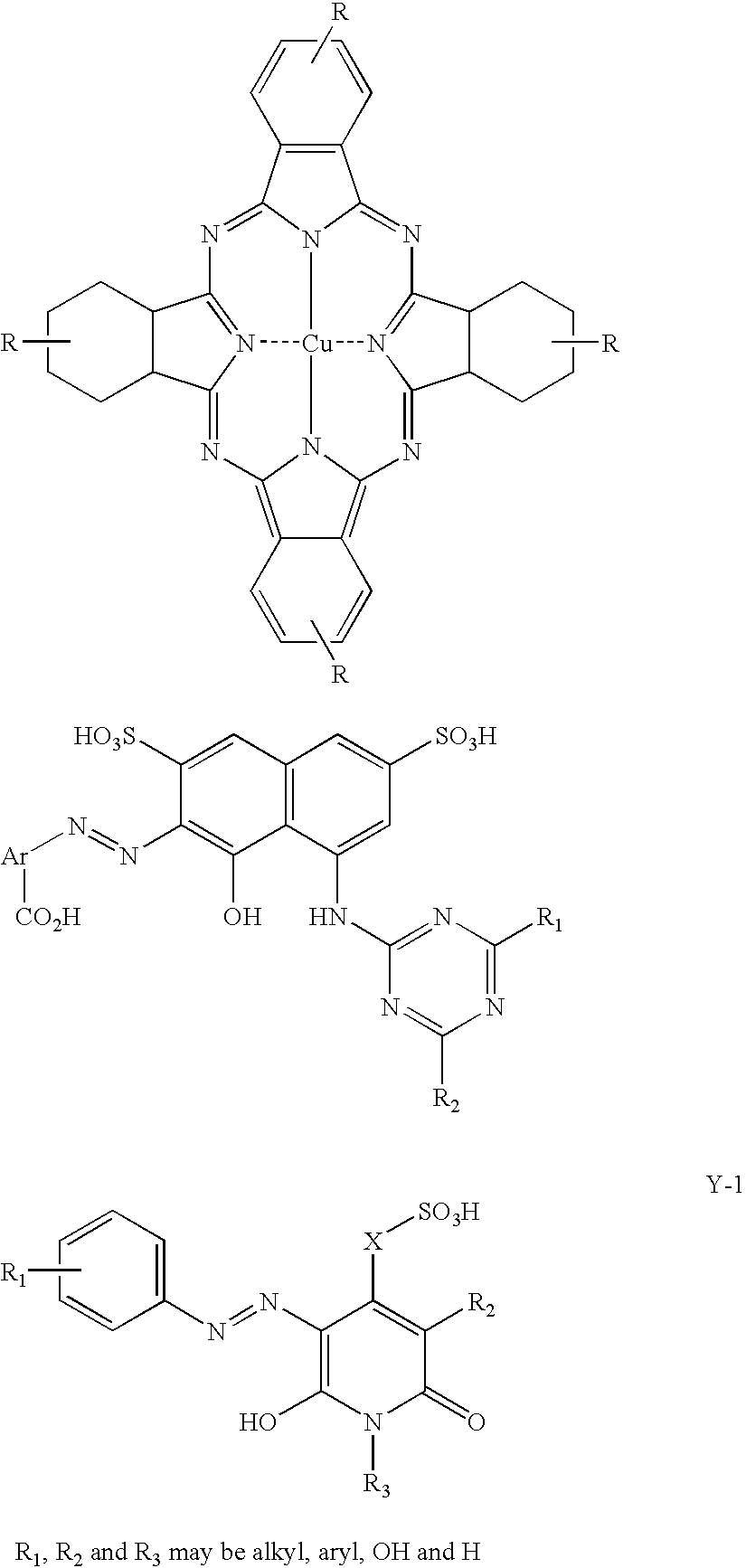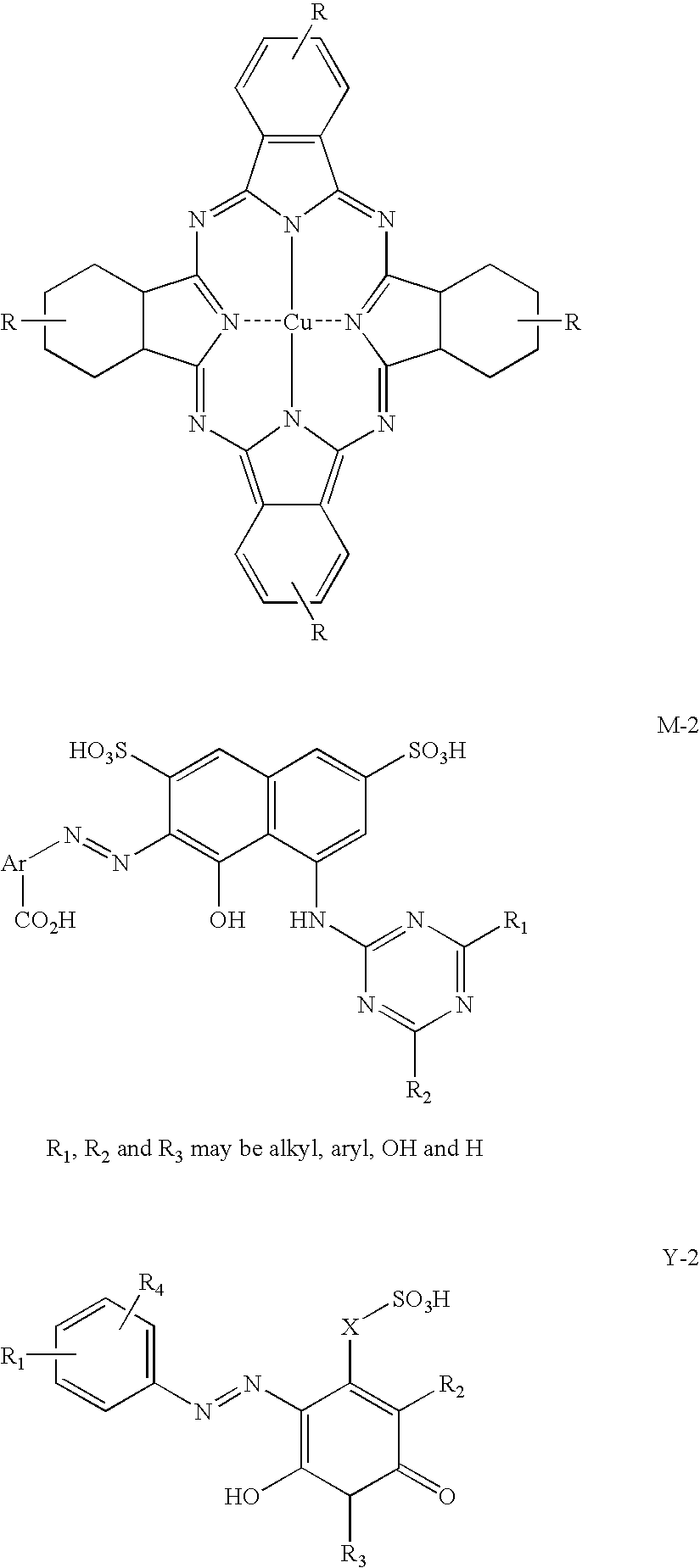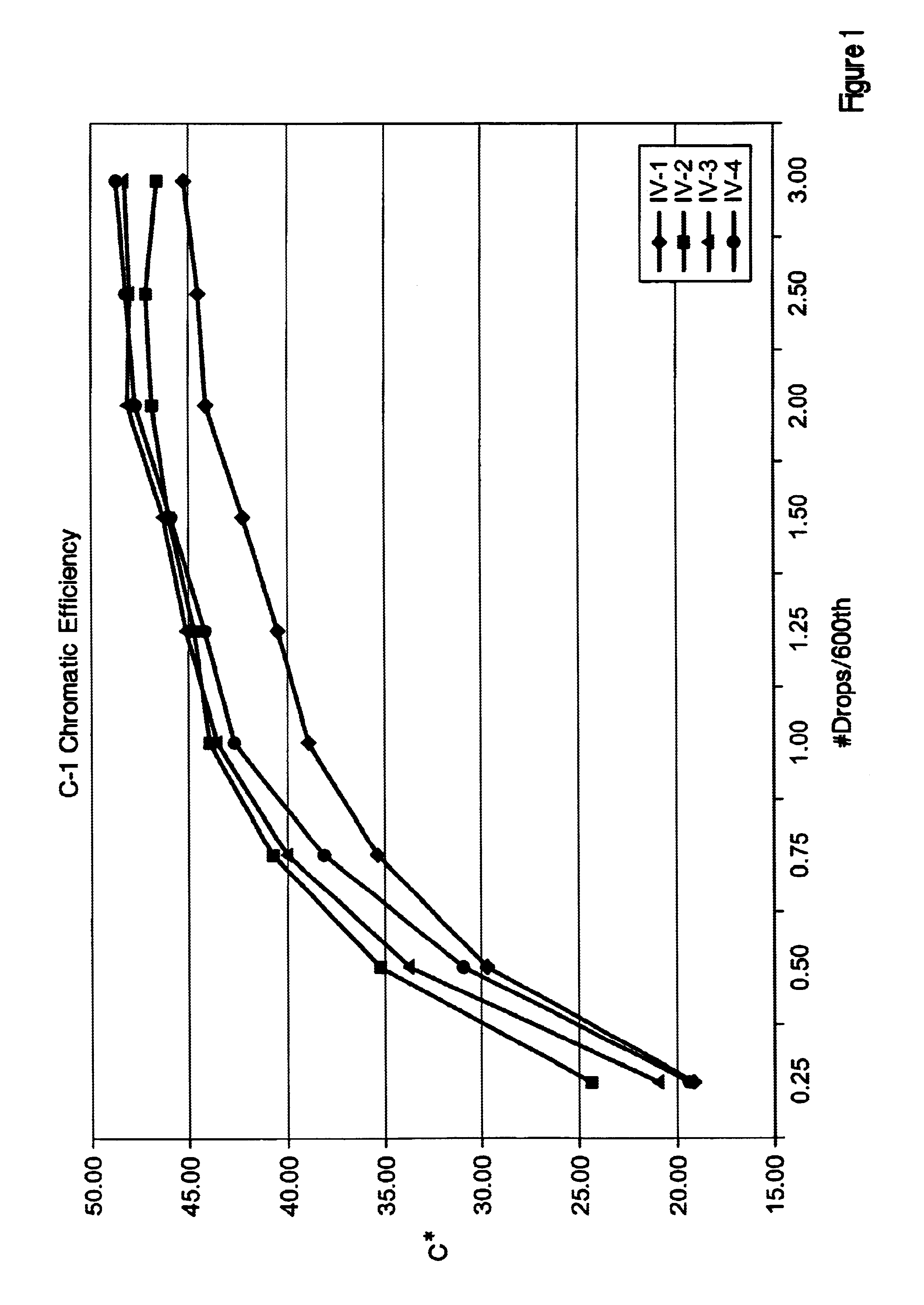Ink and underprinting fluid combinations with improved inkjet print image color and stability
a technology of inkjet printing and underprinting fluid, which is applied in the direction of printing, coatings, and inks, can solve the problems of poor bleed, inferior optical density/chroma, and colorants that retain some mobility,
- Summary
- Abstract
- Description
- Claims
- Application Information
AI Technical Summary
Problems solved by technology
Method used
Image
Examples
example 1
Inks containing custom synthesized dyes were underprinted with a protonated polyethyleneimine (PEI) containing fluid with Ca.sup.2+. The underprinting fluid composition was:
The underprinting test was conducted in a 1:1 v / v regime, that is, 8 pL of fixer fluid to 8 pL of color ink (formulation given below) using an HP DeskJet 2000 printer.
!
There was a chroma boost in all three colors when binder was used (when compared to the blank vehicle containing no binder, see FIGS. 1-3) with little or no change in the durability properties of the printed inks containing the binder vs. no binder. It should be mentioned that the PEI underprinting fluid did, in all cases, increase the waterfastness of the printed dyes--added binder did not significantly increase this property even more. ##STR1##
As can be seen from Table 1 and FIG. 4, there is a large positive effect with the use of binders upon the secondary colors and the composite black.
example 2
Inks containing custom synthesized dyes were underprinted with a protonated polyethyleneimine (PEI) containing fluid. The underprinting fluid composition was:
The underprinting test was conducted in a 1:1 v / v regime, that is, 8 pL of fixer fluid to 8 pL of color ink (formulation given below) using an HP DeskJet 2000 printer.
Except with higher print densities, there was a chroma boost in all three colors when binder was used (when compared to the blank vehicle containing no binder, see FIGS. 5-7) with little or no change in the durability properties of the printed inks containing the binder vs. no binder. It should be mentioned that the PEI underprinting fluid did, in all cases, increase the waterfastness of the printed dyes--added binder did not significantly increase this property even more.
Although from initial observations the underprinting fluid used in Example 2 does not appear to enhance the color space as effectively as the underprinting fluid used in Example 1, it should be p...
example 3
Inks containing custom synthesized dyes were underprinted with a protonated polyethyleneimine (PEI) containing fluid with Ca.sup.2+. The underprinting fluid composition was:
The underprinting test was conducted in a 1:1 v / v regime, that is, 8 pL of fixer fluid to 8 p1 of color ink (formulation given below) using an HP DeskJet 2000 printer.
There was very little chroma boost with the cyan and magenta dyes when using a binder, The reason there is little boost is hypothesized to be due to the fact that the cyan and magenta dyes are carboxylated, making the interaction of the dye with the underprinting fluid occur on the same time scale as the interaction of the binder with the underprinting fluid. Because of the kinetics of interaction, there will be no boost since the binder / underprinting fluid interaction occurs no faster than the dye / underprinting fluid interaction. Although waterfastness of the printed material occurs when using PEI as an underprinting fluid, there was little to no c...
PUM
| Property | Measurement | Unit |
|---|---|---|
| Fraction | aaaaa | aaaaa |
| Fraction | aaaaa | aaaaa |
| Fraction | aaaaa | aaaaa |
Abstract
Description
Claims
Application Information
 Login to View More
Login to View More - R&D
- Intellectual Property
- Life Sciences
- Materials
- Tech Scout
- Unparalleled Data Quality
- Higher Quality Content
- 60% Fewer Hallucinations
Browse by: Latest US Patents, China's latest patents, Technical Efficacy Thesaurus, Application Domain, Technology Topic, Popular Technical Reports.
© 2025 PatSnap. All rights reserved.Legal|Privacy policy|Modern Slavery Act Transparency Statement|Sitemap|About US| Contact US: help@patsnap.com



